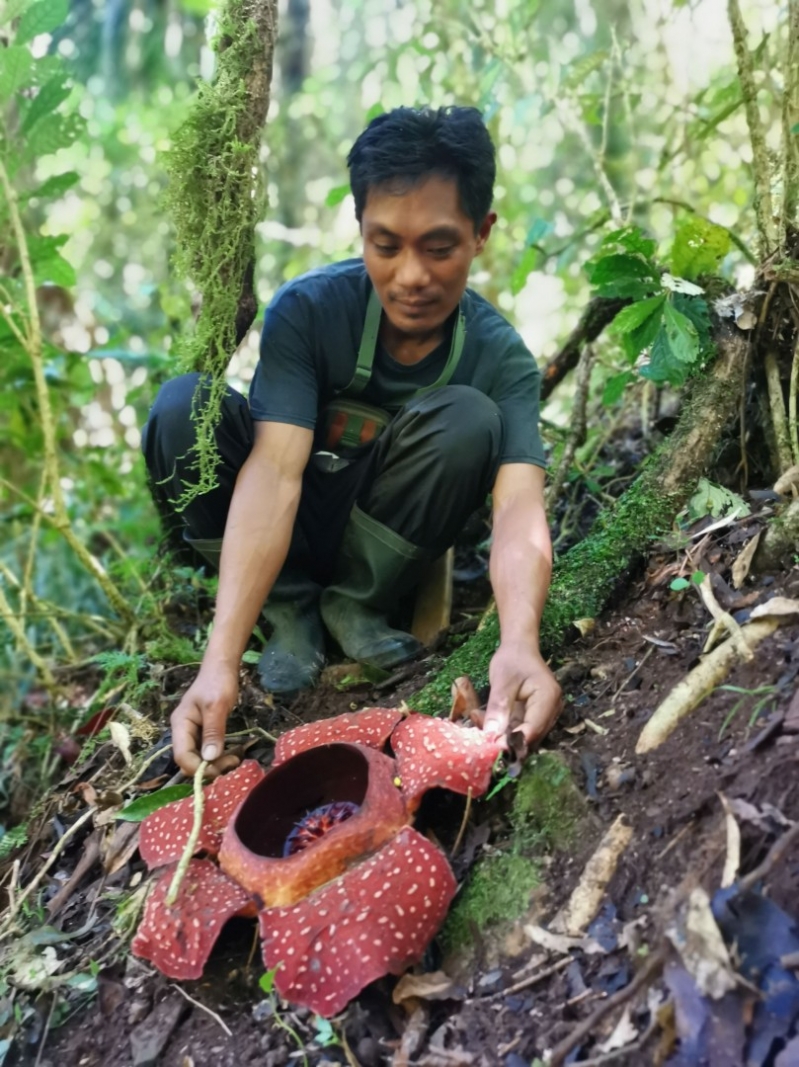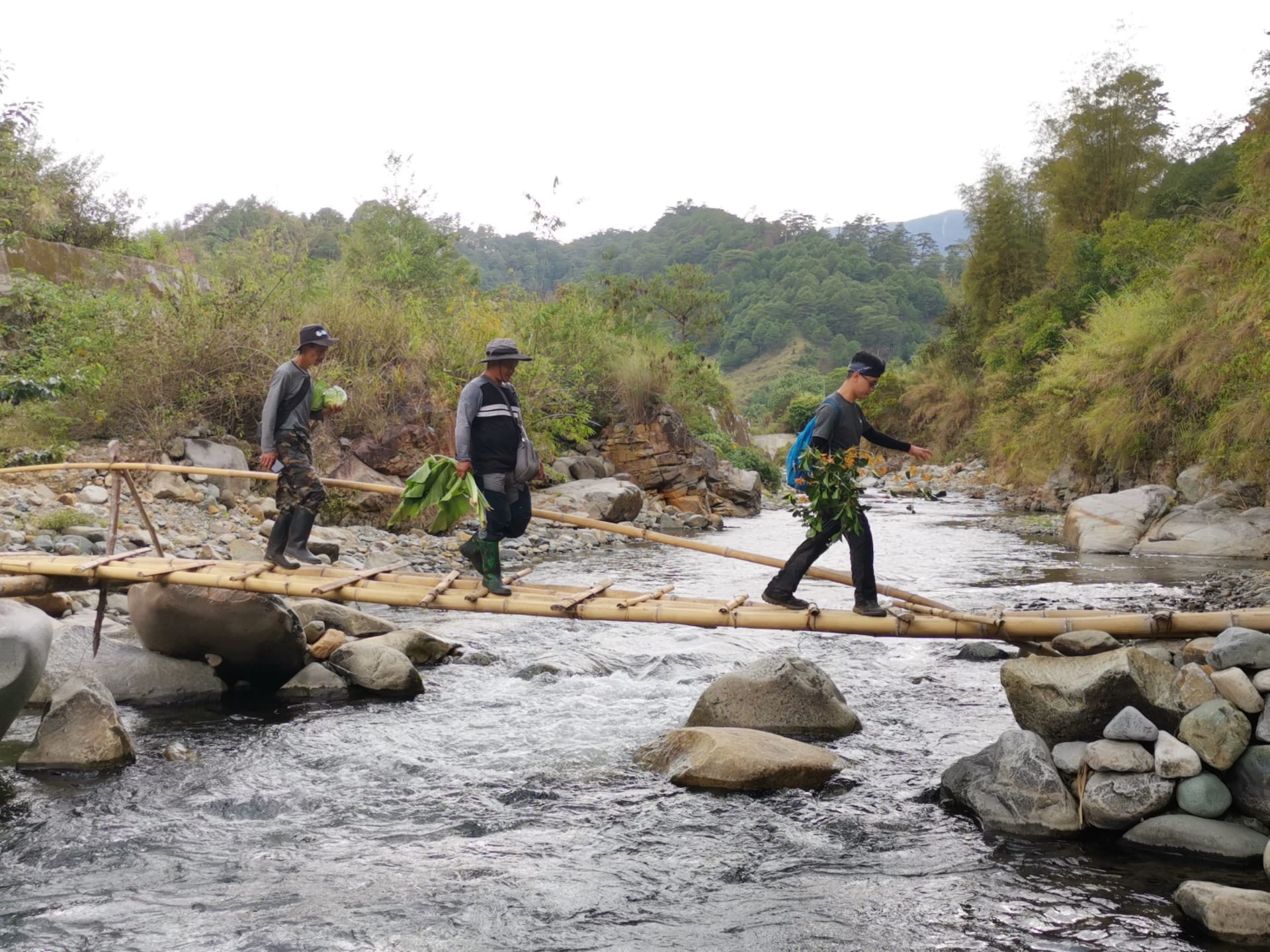Earlier this year I joined botanists Pat Malabrigo and Adriane Tobias, from the University of the Philippines, on an expedition. Our aim was to document and collect data on Rafflesia, the world’s largest flowers. These botanical enigmas are famously elusive and grow in remote rainforests, so the trip was logistically (and physically) demanding.
The trip started in Los Baños with an ascent of Mount Makiling. The jungled slopes of this mountain are reputedly home to more woody species of plant than the whole of the USA. An exciting find here was a wild jade vine (Strongylodon macrobotrys), at the same location in which the type specimen of the species was first collected. It’s bat-pollinated flowers were an otherworldly shade of turquoise. The prize find here was Rafflesia panchoana, nestled in the vines about 500 metres up the mountain slope. The flowers of this species are small, relative to others in the genus, and could fit comfortably in the palm of your hand. The lurid white and red markings were sensational.
We drove north to the Sierra Madre where the University of the Philippines owns a Land Grant – an extensive tract of rainforest with enormous potential for research, conservation, and public engagement. After giving an online seminar, I was taken into the forest to see the native flora. We pushed our way through spiny rattans and pandans, and enormous tree ferns, and eventually found an ant plant (Myrmecodia tuberosa). These plants live in the canopy, and harbour ant colonies. The fallen specimen we found was taken to the nursery for conservation.
 We spent several days in the rainforests of Aurora Province searching for Rafflesia leonardi. The terrain was rough, and involved bike rides into the depths of the forest before setting off on foot - and even swinging on vines. A prize find here was another jade vine called Strongylodon elmeri. I don’t believe this species is in cultivation, so to see it was truly special. It was simply breath-taking: its flowers hung like great chandeliers from the canopy and shone blue through the mist. I had to climb a tree to get close to the flowers, however the finest specimens were out of reach. I still have the bruise on my hip from falling out of the tree – a small price to pay.
We spent several days in the rainforests of Aurora Province searching for Rafflesia leonardi. The terrain was rough, and involved bike rides into the depths of the forest before setting off on foot - and even swinging on vines. A prize find here was another jade vine called Strongylodon elmeri. I don’t believe this species is in cultivation, so to see it was truly special. It was simply breath-taking: its flowers hung like great chandeliers from the canopy and shone blue through the mist. I had to climb a tree to get close to the flowers, however the finest specimens were out of reach. I still have the bruise on my hip from falling out of the tree – a small price to pay.
The most important, and remote, destination of the trip was the forest of Balbalasang–Balbalan in Kalinga Province – a remote tropical wilderness. It took days to get there. In the forest we met the Banao Indigenous Community: they and they alone knew how to reach our target: Rafflesia banaoana – a plant, I was told, I would be the third botanist and first Westerner, ever to set eyes on. With the help of the tribe, we bored into the very depths of the pathless forest, battling with stinging vines and leeches, to reach the site. We crossed a river and entered a densely forested slope where dozens of the giant flowers were quietly unfurling. I can say with sincerity that this was the most extraordinary experience of my life.
At Oxford Botanic Garden, we have exciting plans to extend the work with our colleagues from the University of the Philippines, including taxonomic revisions of Rafflesia, propagating the plant in situ for conservation purposes, and research and conservation at the Land Grant in the Sierra Madre. I recently completed a pencil illustration of the Banao Community and I am happy to report that a print of it was framed and given to them as a small gift to thank them for sharing their special flower with me.
Dr Chris Thorogood is Deputy Director and Head of Science at the Oxford Botanic Garden and Arboretum. Founded in 1621, it is one of the oldest science gardens in the world and a leading centre of research.
Chris tweets regularly at @thorogoodchris1









